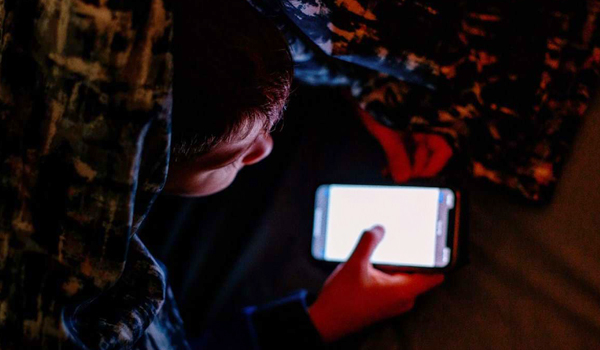Teenage boys targeted as IWF sees surge in child ‘sextortion’ reports
Child sexual extortion, or ‘sextortion’ reports have rocketed eightfold in a year – with boys being deliberately targeted by online criminals, according to the latest data from the Internet Watch Foundation (IWF).
The new figures published this week by the IWF show that last year its analysts confirmed 176 reports of sexual extortion that contained child sexual abuse material.
This is more than eight times as many as the previous year, when 21 cases of sexual extortion were recorded.
Boys are targeted most often in the reports received by the IWF (91 per cent), with analysts frequently seeing evidence of boys being blackmailed by criminals looking to extort money.
Three in five (60 per cent) reports involved 16 and 17 year olds.
Typically, once blackmailers gain children’s trust and successfully coerce them into sharing explicit images or videos, they quickly turn nasty and reveal their true nature, said the IWF.
Offenders either demand money or more sexual imagery in return for not exposing the child’s nudes to family or friends, or putting them on the open internet.
Most of the sexual extortion reports (93 per cent) seen by the IWF come through its Report Remove service, run jointly with Childline.
The first-of-its-kind service empowers children in the UK to have sexual images of themselves removed from the internet and provides support and counselling if requested.
The IWF says if sexual imagery “gets out of control on the internet”, or risks being spread online, children can have it removed and blocked. The IWF can even pre-emptively block imagery that has not yet been shared online, as long as a child has reported the imagery that is at risk of being shared.
Since Report Remove was first piloted in 2019, the IWF has removed 1,395 images and videos reported by young people from the internet.
The IWF and the NSPCC, which runs Childline, are now calling for platforms to do more to protect children – especially if they intend to introduce end-to-end encryption, a move which they say has prompted fears that many child protection measures currently in place could be made less effective.
IWF chief executive office Susie Hargreaves OBE said: “The devastation that sexual extortion can cause cannot be overstated, and it is heartbreaking to see the number of cases continuing to rise.
“Children are not at fault here and we want them to know that there is support available to help them get through this harrowing experience. Wherever possible, IWF analysts will find and remove children’s sexual images and ensure that the image cannot be further shared online.
“However, it is not enough to be dealing only with the aftermath of sexual extortion. End-to-end encryption on messaging platforms is a huge threat to children. We cannot allow criminals to have a safe space online to callously exploit our children without repercussion.
“If tech companies introduce end-to-end encryption on their services, they must do more to ensure safeguards are in place to protect children and other users. There are ways to do so that still respect user privacy and we are happy to work with the tech industry to make that happen.”
NSPCC chief executive Sir Peter Wanless added: “Child sexual extortion is increasingly impacting young people with offenders exploiting poorly designed social media and messaging apps and using well-known grooming tactics with devastating effect, as we saw in the tragic circumstances surrounding the death of Dinal De Alwis.
“It’s crucial that young people know that they can get support if they ever face this situation online. Childline counsellors are just a call or a click away and our Report Remove tool can help get images removed with the help of the IWF.
“Tech companies must do far more to prevent this harm, so it’s incredibly concerning that Meta continue to push ahead with plans to roll out end-to-end encryption on Instagram and Facebook without setting out how they will identify and disrupt abuse.
“It’s also crucial that Ofcom act with bold ambition when implementing the Online Safety Act and take a strong approach to tackling child sexual abuse.”
The IWF says girls appear to be targeted for more sexually explicit images while boys are overwhelmingly targeted for financial reasons.
In transcripts seen by its analysts, the IWF said it is clear children often do not realise they are being recorded by offenders and are “horrified when the captured imagery is shown to them”.
It is usually overlaid with lists of contacts – friends, schoolmates, family members, and sometimes even the police – to whom the blackmailer is threatening to send the imagery.
Nearly seven per cent of the cases seen in 2023 contained the most severe type of child sexual abuse content, Category A, which could involve penetrative sexual activity, a sexual act with an animal, or sadism.


